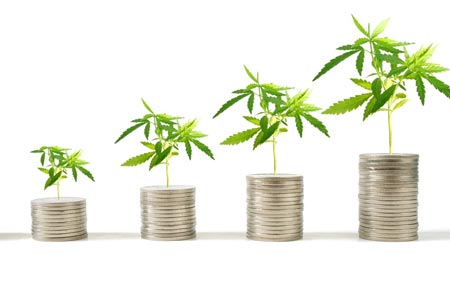Thank you for Subscribing to Agri Business Review Weekly Brief
Medicinal Cannabis and the Evolution of Chronic Pain Treatment
In recent years, medicinal cannabis has emerged as a focal point in the dynamic landscape of chronic pain treatment, signalling a notable evolution in therapeutic approaches

By
Agri Business Review | Friday, December 01, 2023
Stay ahead of the industry with exclusive feature stories on the top companies, expert insights and the latest news delivered straight to your inbox. Subscribe today.
Summary: Medicinal cannabis stands at the forefront of revolutionising chronic pain treatment, offering a promising avenue for relief and management, reflecting a shift towards alternative therapies, and presenting a natural and potentially effective solution.
FREMONT, CA: In recent years, medicinal cannabis has emerged as a focal point in the dynamic landscape of chronic pain treatment, signalling a notable evolution in therapeutic approaches. As societies reevaluate traditional methods and embrace alternative solutions, the role of cannabis in alleviating chronic pain has gained substantial attention.
For the management of chronic pain, millions of individuals turn to opioids, even if there are other options, such as NSAIDs. Opioids, however, carry the danger of addiction and are a factor in the ongoing overdose epidemic. Patients with chronic pain are left with a difficult choice: they need effective medications, but the ones that are recommended could be harmful or even addictive.
As an alternative, medicinal cannabis has been shown to be successful in the long-term management of pain. Nevertheless, its prescription and availability are severely limited.
Given the efficacy of medications such as morphine, diamorphine, oxycodone, and fentanyl, hospitals and other healthcare facilities have few options when it comes to prescription medications for chronic pain other than opioids. Unfortunately, this makes it harder for patients to go off these drugs, which increases the risk of addiction and drug-related mortality. The problem is made more harmful by the accessibility of prescription drugs, their low cost, and a firmly established pharmaceutical supply chain.
Research has repeatedly demonstrated the efficacy of cannabis, indicating that a wider distribution system may be helpful in reducing opioid addiction.
Studies reveal that cannabis has an opioid-sparing and synergistic impact when used as an analgesic. Minimised opioid doses are possible when cannabis is prescribed in addition to opioids, which may minimise the risk of addiction and overdose. For example, co-administering delta-9-THC cannabis with morphine led to a 3.5 times lower morphine dose for an equivalent analgesic effect, according to a systematic review and meta-analysis.
The effectiveness of this strategy, meanwhile, depends on laws and the legalisation of cannabis-based medical therapies. The majority of research supports the notion of a synergistic impact, even though others indicate no improvement in opiate usage with cannabis access.
Currently, state-level legalisation of cannabis coexists alongside federal prohibition, creating a fragmented legal landscape. Cannabis usage is still illegal federally, even in places where it has been legalised. Unifying laws would be a good thing, especially for the medical cannabis industry, as it would allow physicians to recommend products that adhere to strict quality requirements, such as THC thresholds.
At lower doses, CBD often has little side effects, but at greater concentrations, there may be gastrointestinal hazards. THC in medicinal marijuana may cause nausea, vomiting, sleepiness, increased appetite, dry mouth, and weariness. THC is psychotropic, which makes driving difficult and causes disorientation. Up to 600 mg of CBD is generally considered safe, although it may interfere with medicines as it inhibits the liver enzyme CYP2D6. THC-containing medical marijuana is advised for people with a family history of mental illnesses.
It is expected that laws pertaining to medical cannabis will gradually change. On the other hand, creating a strong pipeline and setting product standards is a difficulty for producers and authorities. Pipeline development depends on testing to verify compliance with applicable regulations, including pesticide and heavy metal compliance, and maintaining product uniformity. Medical cannabis is anticipated to become more widely available as manufacturing and compliance testing costs decline.
Hence, the evolving conversation around cannabis underscores its potential to redefine the future of chronic pain treatment, offering hope and relief to individuals navigating the complexities of persistent pain.





